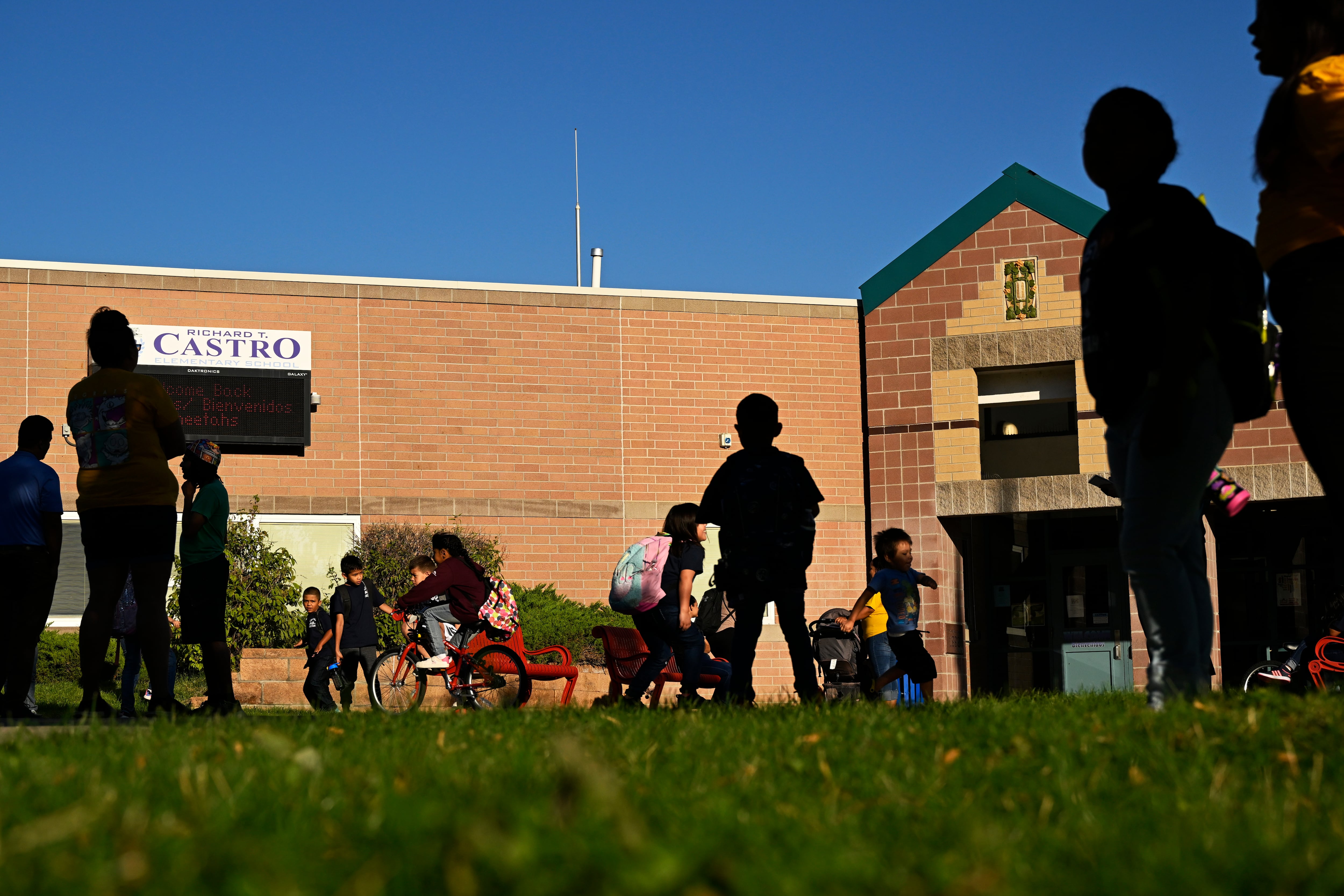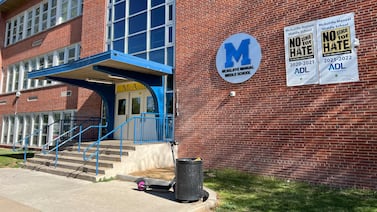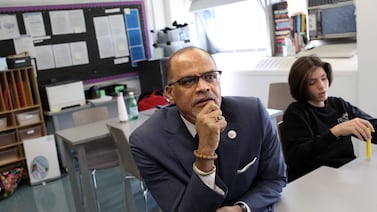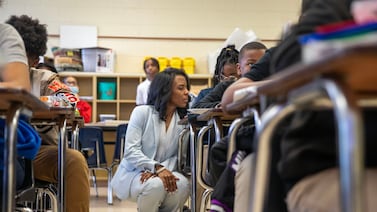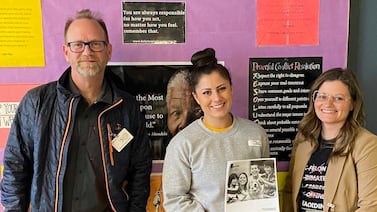Sign up for Chalkbeat Colorado’s free daily newsletter to keep up with education news from Denver and around the state.
Denver schools remain intensely segregated by race and family income — conditions that have persisted for decades and play a major role in shaping educational opportunities, a new study finds.
Latino students and English learners are especially likely to attend schools where students of color living in poverty make up the large majority. Meanwhile, three-quarters of Denver’s white students attend schools where white and higher-income students make up a significant majority, despite making up just a quarter of Denver students overall, the study finds.
These more privileged schools boast graduation rates 10 to 40 percentage points higher than schools with high concentrations of poverty — and the benefits extend to students from all groups who attend these schools.
Kim Carrazco Strong of The Bueno Center for Multicultural Education at the University of Colorado Boulder and Craig Peña of the Latino Education Coalition, the study authors, write that “pervasive” school segregation affects everything from access to specialized services to gifted identification to graduation rates.
“These findings indicate that school segregation is a pervasive problem in Denver Public Schools, impacts a majority of certain student populations such as Latino and English Learner students, represents disparate and at times inferior resources and designations, and reflects reduced student outcomes,” write Carrazco Strong and Peña write.
As a child, Peña was one of the original plaintiffs in the Keyes case, which led to the first major desegregation order in a city outside the South and the first desegregation order to consider Latino students alongside Black and white ones.
The Keyes decision led to several decades of busing to ensure integrated schools. With the end of court-mandated busing in 1995 and the return to neighborhood schools, Denver schools resegregated almost overnight.
In a press release announcing the report, Peña said he was “extremely disheartened” by the findings.
“The segregation of Latino students is profound and pervasive,” he said. “It is my sincere hope that DPS and the Denver community will come together to address this and not allow yet another 50 years to pass of separate and unequal education.”
The report, titled Resegregation in Denver Public Schools: Overlapping Systems of Student Segregation, Disparate Contexts, and Reduced Outcomes, finds significant segregation persists in the district and that attending segregated schools shapes students’ educational opportunities.
For example, more than half the gifted and talented students in Denver attend schools with large concentrations of white and higher-income students.
“We hold that it is not that Gifted and Talented students are more likely to be White and wealthy but rather White and wealthy students are more likely to be seen as Gifted and Talented by Denver Public Schools,” the authors write. They said the failure to see the talents of other students “represents an institutional shortcoming” and goes against the district’s obligations to provide a good education to all students.
Because they post lower test scores and are perceived as struggling, schools with high concentrations of low-income students of color are more likely to receive what are known as intensive interventions. These can include help from content experts, leadership development, teachers coaching, and access to customized support networks.
The study authors say this additional support may be helpful, but “those schools also experience interruptions, stigma, curriculum redesigns, and teacher de-professionalization that can be perceived as negative or punitive by the educators and students within them.”
Denver’s student population is roughly one-quarter white and three-quarters students of color. Slightly more than half of Denver students are Hispanic or Latino. Roughly 63% qualify for free- or reduced-price lunch, a measure of poverty. A third of Denver students are learning English at school.
The study authors defined a school as segregated if its student population differed from the district average by 20% or more. More than half of Denver’s Latino students and more than half of the district’s English learners attend schools that are segregated based on race and income, the study found. White students and higher-income students are also much more likely to attend school with other students like themselves.
In schools where low-income students are concentrated, Black students on average are about as represented as they are in the district as a whole. And on average Black students are more represented in majority-white schools than Latino students are.
This is not the first report to identify widespread school segregation in Denver, and the problem has persisted through several superintendents and school boards. A 2006 study from Harvard University’s Civil Rights Project identified similar trends as the new report from the Latino Education Coalition and noted that Latino English language learners were especially isolated.
In 2017, the district convened the Strengthening Neighborhoods Initiative to recommend policy changes to reduce school segregation.
The new study does not address the causes of school segregation or recommend solutions. The authors call for further study to identify targeted solutions. Attending integrated schools is associated with better outcomes for all students and smaller gaps in test scores, graduation rates, and other measures of student achievement.
Many Denver neighborhoods are highly segregated. School choice allows students to enroll outside their neighborhood boundary, but transportation and other barriers limit who can use it.
A 2018 study by the advocacy and research group A Plus Colorado found that students of color were often overrepresented in local schools, compared with the neighborhood population, while white students were underrepresented. The finding suggests some white, middle-class families use school choice to avoid their neighborhood schools.
Denver Superintendent Alex Marrero said in a statement that he plans to partner with the Latino Education Coalition on identifying root causes and solutions.
“It is vitally important that we leave no stone unturned in finding the root causes, even if the findings make us uncomfortable,” he said. “While many factors led to this outcome we are not without blame. It is time for DPS to take a look in the mirror and see if any of our own actions may have contributed to the re-segregation of our schools. As Superintendent it is my duty to advocate for all our students by breaking down the systems of oppression when we find them.”
Bureau Chief Erica Meltzer covers education policy and politics and oversees Chalkbeat Colorado’s education coverage. Contact Erica at emeltzer@chalkbeat.org.


